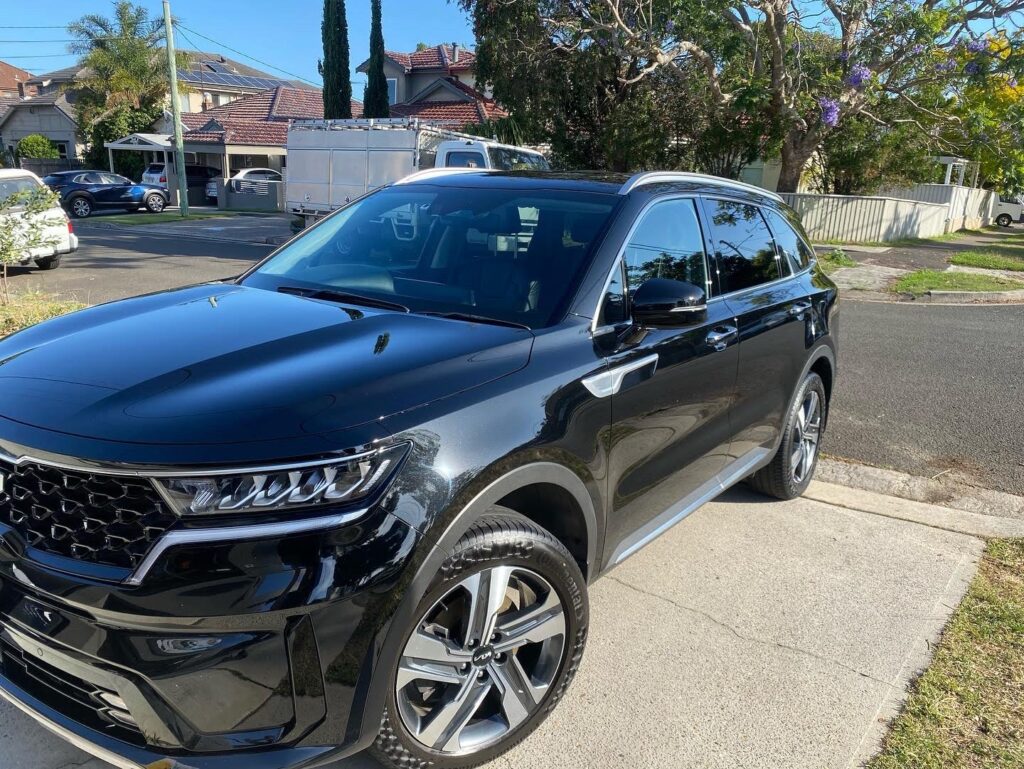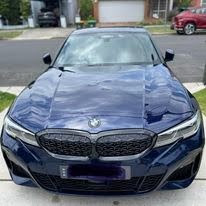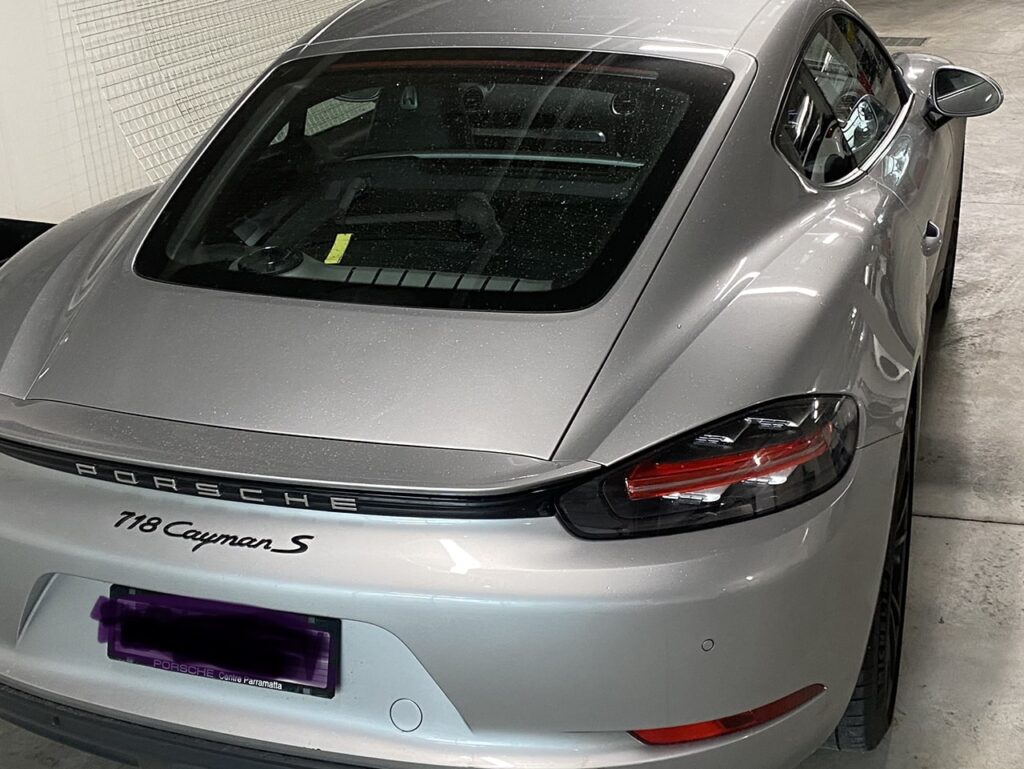For those living in coastal regions, owning a car comes with a unique set of challenges. Salt air, abrasive sand, and intense UV exposure can wreak havoc on your vehicle’s exterior, causing paint damage, corrosion, and fading. To counter these harsh conditions, car detailing plays a crucial role in maintaining the longevity and appearance of your vehicle.
Among the most effective solutions are ceramic and graphene coatings. These advanced protective layers provide a robust defence against the elements, ensuring your car remains in pristine condition. Whether you drive a daily commuter or a luxury vehicle, these coatings, when applied by a professional detailer for cars, can make all the difference in protecting your investment.

The Dangers of Coastal Conditions for Your Car
Living by the coast may have its perks, but for your car, it’s a different story. Coastal environments expose vehicles to numerous risks that require special attention.
Salt Air’s Impact on Paint and Metal
Salt is one of the most damaging elements for cars in coastal regions. The salt particles in the air can settle on your car’s paint and metal surfaces, accelerating rust and corrosion. Without a protective barrier, these particles penetrate the paint, creating rust spots and causing damage that can quickly spread.
UV Exposure and Fading
The sun is another culprit in coastal environments, with its harsh UV rays leading to paint oxidation and fading. Prolonged exposure to the sun can weaken the clear coat, dulling your car’s shine and reducing its overall appearance. Ceramic and graphene coatings help prevent UV damage by reflecting these harmful rays, ensuring your car’s paint remains vibrant and protected.
Sand, Moisture, and Corrosion
Coastal winds often carry fine sand particles, which can act like abrasives, scratching your car’s paint. Additionally, the high levels of humidity and moisture present in coastal areas increase the risk of rust. Regular car detailing and protective coatings provide a barrier against these threats, keeping your car’s exterior smooth and damage-free.
What Are Ceramic and Graphene Coatings?
So, what are these coatings, and how do they protect your car from the coastal elements?
Defining Ceramic and Graphene Coatings
Ceramic coating is a liquid polymer that chemically bonds to the vehicle’s paint, creating a durable, protective layer. This coating is hydrophobic, meaning it repels water, dirt, and contaminants, making it harder for salt, sand, and moisture to damage the car’s surface.
On the other hand, graphene coating is a newer technology derived from graphene, a single layer of carbon atoms arranged in a hexagonal lattice. Known for its strength and flexibility, graphene coating offers even greater protection than ceramic, particularly in heat dissipation and resistance to water spots.
Key Differences Between the Two
While both coatings provide excellent protection, graphene coating tends to last longer and offers superior heat resistance. Ceramic coatings, however, are still highly effective and more widely available, making them a great choice for many car owners. Professional detailers for cars like Vince’s Car Detailing have extensive experience in applying both coatings, helping you choose the best one for your needs.

Benefits of Ceramic Coating for Coastal Car Owners
Ceramic coating is a popular choice for car owners who want long-term protection in tough coastal conditions.
Ceramic Coating for Paint Protection and UV Resistance
One of the primary benefits of ceramic coating is its ability to protect your car’s paint from UV damage. By reflecting harmful UV rays, the coating prevents oxidation and fading, ensuring that your car retains its showroom shine. It also acts as a protective shield against minor scratches and abrasions caused by sand and debris.
Hydrophobic Properties and Easier Maintenance
Ceramic coatings are highly hydrophobic, meaning they repel water and contaminants. This makes washing your car easier and reduces the frequency of cleaning required. Salt, dirt, and grime have a harder time sticking to the surface, meaning your car stays cleaner for longer. Regular maintenance becomes much simpler, allowing you to enjoy a well-protected vehicle with less effort.
Advantages of Graphene Coating in Harsh Environments
For those seeking the next level of protection, graphene coating offers superior benefits, especially in harsh coastal environments.
Enhanced Durability and Heat Dissipation
Graphene coating stands out for its exceptional durability, lasting even longer than ceramic coatings. It provides a hard, slick surface that resists scratches, abrasions, and other forms of damage more effectively. Additionally, its unique molecular structure allows it to dissipate heat more efficiently, reducing the risk of heat damage in hot, sunny coastal regions.
Superior Protection Against Salt and Corrosion
The enhanced chemical properties of graphene coatings make them particularly effective at preventing corrosion caused by salt and moisture. This is critical in coastal areas, where vehicles are regularly exposed to salt air and sea spray. With graphene, your car gets a more robust shield against rust, ensuring the longevity of metal components and the vehicle’s underbody.

Why You Need a Professional Detailer for Car Coating
While you may be tempted to apply these coatings yourself, hiring a professional detailer for car is essential to achieving the best results.
The Importance of Professional Car Detailing Services
Professional car detailing ensures that the surface of your vehicle is properly prepped before applying any coating. This includes thorough washing, decontamination, and, if necessary, paint correction to remove any scratches or imperfections. Only then can ceramic or graphene coatings bond correctly with the paint, providing the protection your car needs.
Why Hiring an Expert Detailer for Car Application Matters
Applying ceramic or graphene coating requires precision and experience. Professional detailers like the experts at Vince’s Car Detailing use specialised tools and techniques to ensure even application, avoiding issues like streaks or improper bonding. Their expertise also allows them to choose the right product for your car’s specific needs, ensuring maximum protection.
Cost-Effectiveness of Coating for Long-Term Protection
Investing in ceramic or graphene coatings may seem costly upfront, but the long-term benefits make it a wise investment.
Investment in Coatings vs. Frequent Repairs
Without proper protection, cars exposed to coastal elements often require frequent repainting or rust repairs. These costs can add up quickly. By applying ceramic or graphene coatings, you extend the life of your car’s paint and metal components, reducing the need for costly repairs down the road.
Long-Term Savings with Reduced Reapplications
While waxes and sealants may offer temporary protection, they require frequent reapplication. In contrast, ceramic coatings can last 2-5 years, and graphene coatings can last even longer. This not only saves money in the long term but also ensures that your car remains protected with less effort.

Choosing Between Ceramic and Graphene Coating
Deciding between ceramic and graphene coatings depends on your specific needs and budget.
Factors to Consider When Choosing the Right Coating
If you’re looking for solid protection at a lower price point, ceramic coating is an excellent option. However, if you live in a coastal area with extreme conditions or prefer even longer-lasting protection, graphene coating might be the better choice. It’s more durable and offers enhanced resistance to heat and water spots.
Recommendations Based on Specific Car and Location Needs
For daily drivers who park outdoors or spend a lot of time by the coast, graphene coating offers superior protection. Luxury vehicles, which often need the highest level of care, also benefit greatly from graphene. For others, ceramic coating provides more than enough protection, particularly when applied by an experienced detailer for cars like Vince’s Car Detailing.
Conclusion
For coastal car owners, investing in ceramic or graphene coatings is essential to protect against the damaging effects of salt, UV rays, and sand. These coatings provide a durable, long-lasting shield that preserves the beauty and functionality of your vehicle. Whether you opt for ceramic coating for its affordability and ease of maintenance, or graphene coating for its superior durability, hiring a professional detailer for car application ensures you get the best results. Protect your investment, enhance your car’s appearance, and enjoy long-term savings by choosing the right coating for your coastal vehicle.
Looking for the best way to protect your car from the harsh coastal elements? At Vince’s Car Detailing, we specialise in professional car detailing services, offering advanced ceramic and graphene coatings to shield your vehicle from salt, UV rays, and corrosion. Our expert team ensures your car remains in top condition, no matter the environment. Visit Vince’s Car Detailing today to book your service and experience unparalleled protection for your car!
Get In Touch
Email: vincesdetailing@gmail.com
Address
104 Garden St, Maroubra NSW 2035
Assistance Hours
Mon – Sat 8:00am – 5:00pm
Sunday – CLOSED
Phone Number:
FAQs
How long do graphene and ceramic coatings last?
Ceramic coatings typically last between 2-5 years, while graphene coatings can last even longer, often extending protection for up to 7 years.
Can I apply the coating myself?
It’s possible, but for optimal protection and application, it’s recommended to hire a professional detailer for car to ensure proper bonding and even coverage.
What is the best coating for my car in coastal areas?
Both ceramic and graphene coatings provide excellent protection, but graphene may be better for extreme coastal conditions due to its superior salt and heat resistance.
What is the difference between ceramic and graphene coatings?
While both offer durable protection, graphene coating is generally more resistant to water spots, heat, and scratches compared to ceramic coating.
How often should I detail my car with these coatings?
Depending on your environment, a professional car detailing service with ceramic or graphene coatings should be performed every 2-5 years to maintain maximum protection.
